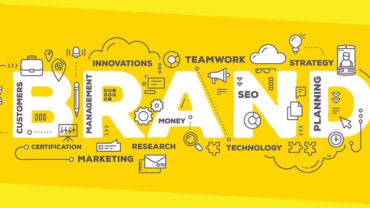6 Ways How Search Engines Display Search Results

Contents
ToggleIntroduction:
Search engines enable users to search the web for content by using keywords. There are many search engines available that anyone can use, even though a few controls the market. A search engine returns a search engine results page (SERP) page. This ranks the pages found following their relevancy. The method of ranking pages varies from one search engine to another.
To improve user experience, search engines frequently change their algorithms (the programs that rank results). They try to understand the user’s search patterns and provide the most relevant results, and this means that they prioritize the most relevant and high-quality pages.
If you want to know more about your rank & improve, you can use best rank tracking tools to improve your blog.
What is the working principle of search engines?
Three key steps are required to make search engines work.
Crawling- Search engines use programs called spiders, robots, or crawlers to search the web. This may happen every few days, so content can become outdated until crawlers revisit your site.
Indexing – The search engine will attempt to categorize and understand the content of a webpage through ‘keywords. SEO best practices will allow the search engine to understand your content and rank you for the correct search queries.
Search engines can easily crawl your site. You can also ask them to crawl new content.
You can have your content appear in relevant searches if indexed with the correct keywords.
You can rank high on the SERP with your content.
Search engines for directories
Many niches search engines work as directories for certain types of content. They only display results for content that has been manually added, and they don’t crawl the internet. These directory search engines allow you to rank high for relevant queries using SEO techniques. Check out the different types of search engines.
Rich media search results
Search engines use universal or ‘blended search to present different types of content in search results. The SERP will show text pages and rich media content such as images, videos, and maps.
Your chances of being ranked on search engines and in the rankings could be affected by having multiple types of content on your site.
This section summarizes the query information and links to images or other information.
Generic Search Engine Position Layout
Let’s begin by taking a look at a very generic SERP layout.
A: Answer Box / Featured Snippet
This section is located above the organic results and attempts to answer the user’s full intent.
As you can see, if there is only one intent, it will be a simple answer.
It is essential to structure your content to produce the answer box, which often leads to the answer for Google voice searches. As you can see, not all solutions are created equal, and you can read more about that below.
B: Knowledge Panel / Graph
This summary usually contains the core information Google considers core to a person’s identity, whether they are a business entity or a human entity query. This is the crucial information that a searcher would be most interested in.
We have vital facts and images for more general queries (e.g., the civil war) and links to other events or entities.
As mentioned above, voice search results do not always come from the answer boxes.
The voice result for knowledge panels will usually come from this location. Even though there may be an exception, I have yet to see one.
C: People also ask
As its name implies, this section contains questions related to the original query.
This section is usually triggered when the initial question implies that the user seeks information about a topic.
The query’s content is more important than the search volume. These aren’t necessarily the top queries about an entity but the questions directly related to the original question.
An answer to the query is provided when a result is expanded, and it includes a link to where the answer was found.
D: Organic Results
The page you see above is technically an organic result.
These pages are created using a combination of highly sophisticated algorithms at Googleplex. They are ordered based on those algorithms designed to produce top pages that satisfy the user’s likely intent(s).
As that is not the point of this article, I won’t attempt to explore what signals are being used.
E: Video Results. (Alternate to News or Images).
Popular videos that answer a question are often displayed on a carousel.
Google may also consider adding images to the query if it believes that the user intent is being met.
G: Related Searches to.
We will find related searches at the bottom.
They are different from “People Also Ask” because they don’t need to be questioned (though they could be). There can be some overlap, but not always.
These are generally generated by other people who searched the same query as you have done.
Recommended For You
Making the Case for Building a Strong Brand
Most Inside
Most Inside offers high-quality recommendations and valuable updates to enhance all aspects of your life, providing premium guidance and enriching experiences.




